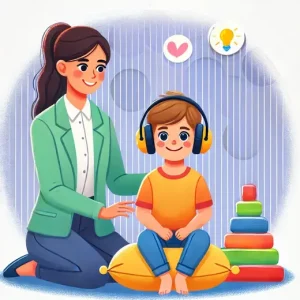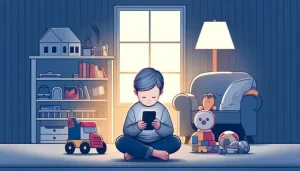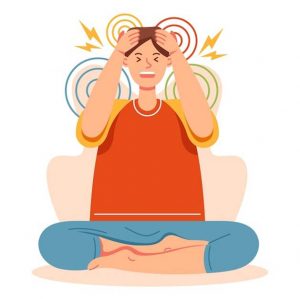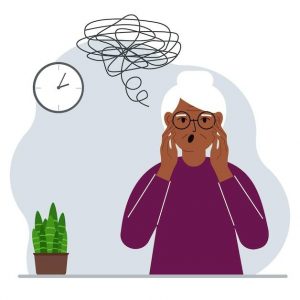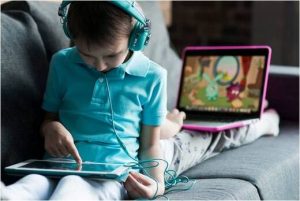Virtual Autism vs. Autism: What Parents Need to Know
By Rajini D
Last Updated: April 27, 2024
In the digital era, where screens have become our windows to the world, the conversation around Autism Spectrum Disorder (ASD) has taken on new dimensions. It’s not just about understanding a condition that affects social interaction, communication, and behavior—it’s also about exploring how our virtual lifestyles influence this complex spectrum. Enter the concept of “virtual autism,” a term that’s been sparking dialogue among professionals, parents, and individuals alike. But what exactly does it entail, and how does it relate to traditional forms of autism?
Define Autism
Autism Spectrum Disorder (ASD), or simply autism, is a term many of us have come across, but what does it really mean? At its core, autism is a neurological and developmental disorder that affects how people perceive the world and interact with others. It’s a spectrum condition, which means it impacts individuals differently, varying from mild to severe across three main areas: social communication, social interaction, and repetitive patterns of behavior and interests.
Imagine walking into a party where everyone knows the dance steps except you, and you’re trying to catch on without a clear guide. For someone with autism, navigating social cues and engaging in typical conversations can feel somewhat like this—challenging and often overwhelming. Autism symptoms might include difficulty making eye contact, understanding others’ feelings, or adapting to unexpected changes.
The Rise of Virtual Autism
In the digital age, a term is making its way through the corridors of modern psychology and digital wellness discussions: virtual autism, also known to some as digital autism or Virtual ASD. This relatively new concept has emerged from the shadows, painting a complex picture of how our increasingly screen-filled lives might be affecting us, especially our children, in ways we are only beginning to understand.
The Hypothesis Behind Virtual Autism
Virtual autism isn’t recognized as a formal medical diagnosis, but the hypothesis behind it is compelling. It suggests that excessive screen time, especially in young children, can lead to behaviors and challenges typically associated with Autism Spectrum Disorder (ASD). These include difficulties in social interaction, delays in language development, and repetitive patterns of behavior. The key difference? Virtual autism behaviors are thought to emerge primarily in digital environments and are linked closely with the amount of time spent engaging with screens.
Imagine a child who spends hours upon hours in front of a tablet or computer. Over time, this child might begin to exhibit signs that bear a striking resemblance to autism, such as limited eye contact, difficulty in social situations, or an intense focus on specific interests that revolve around their digital activities. The concern here is that the immersive, often solitary nature of digital environments could limit opportunities for traditional socialization and physical play, which are crucial for development.
Also Read: How to Put Off the Child from Gadgets? | How to Unplug My Kid?
Key Differences Highlighted
Navigating the nuanced landscape between autism and virtual autism requires an understanding of their key differences. While both conditions might share some behavioral traits, they are distinct in their onset, environmental factors, and how behaviors manifest. Here’s a straightforward comparison:
Onset
- Autism: Typically recognized in early childhood, around 2-3 years old, when developmental milestones related to social skills and communication are missed or delayed.
- Virtual Autism Can emerge at any age, but concerns are primarily associated with young children exposed to excessive screen time over a prolonged period.
Environmental Factors
- Autism: A complex interplay of genetic and environmental factors is believed to contribute to autism. No single cause has been identified, but it’s understood to be present from birth.
- Virtual Autism: Hypothesized to be largely influenced by environmental factors, specifically the amount and nature of screen time. It’s considered a consequence of digital environment exposure rather than genetic factors.
Behavioral Manifestations
- Autism:
- Difficulties with social communication and interaction across all environments (home, school, community).
- Engages in repetitive behaviors or has highly focused interests (e.g., lining up toys, fixating on a particular topic).
- They may have sensory sensitivities (e.g., discomfort with certain sounds and textures).
- Virtual Autism:
- Behavioral challenges might be more noticeable in contexts requiring face-to-face interaction, whereas the individual may appear more engaged or comfortable in digital environments.
- Similar to autism, there might be repetitive use of digital content or a strong preference for screen-based activities over other types of play.
- Symptoms such as difficulties in social interaction and communication are thought to be induced or exacerbated by the digital medium.
It’s essential to approach this comparison with sensitivity and awareness that each individual’s experience is unique. While “virtual autism” is not officially recognized in the same way as ASD, the discussion around screen time and its impacts is crucial. At Wellness Hub, we emphasize the importance of understanding these differences not just for academic or diagnostic purposes but to foster supportive, informed communities. By recognizing the distinct needs and experiences of individuals with autism and those affected by high screen time, we can better support their development and well-being.
Know more: Integrated Yoga Therapy for teaching Toothbrushing skills | Children with ASD
The Impact on Individuals and Families
Living with autism or navigating the complexities of virtual autism impacts not just individuals but their entire families. These challenges permeate daily routines, social interactions, and the overall family dynamic, requiring a tapestry of support, understanding, and adaptation.
Autism brings with it a unique set of challenges. Daily routines might need to be carefully structured to accommodate sensory sensitivities or to provide a predictable environment that feels safe for the individual with autism. Social interactions, a fundamental part of our human experience, can also be fraught with difficulties, necessitating patience and, often, specialized communication strategies. Families might find themselves becoming advocates in schools and communities, striving to create understanding and inclusive environments for their loved ones.
While virtual Autism shares some behavioral similarities with autism, it introduces a different set of challenges, primarily revolving around digital media use. Families might struggle with setting boundaries for screen time, which can be particularly challenging in today’s digital age, where screens are ubiquitous. The balance between leveraging technology for learning and development versus mitigating potential negative impacts on social skills and behavior is a tightrope that many families navigate daily.
Know more: Inspiring Success Stories: Famous Personalities Thriving with Autism Spectrum Disorder.
Wellness Hub’s Perspective:
At Wellness Hub, we recognize the pivotal role supportive communities and accessible resources play in empowering families facing these challenges. We believe that it takes a village to not only raise awareness but also to foster environments where individuals with autism, and those experiencing challenges associated with high digital use, can thrive.
- Supportive Communities: Creating spaces where families can share experiences, strategies, and successes is crucial. Whether through support groups, online forums, or community events, these networks provide a lifeline of understanding and shared knowledge.
- Accessible Resources: Information is power. Providing families with access to the latest research, practical advice, and professional support can make a significant difference in navigating daily challenges. Wellness Hub is committed to being a part of this knowledge-sharing ecosystem, offering resources that are both informative and practical.
- Advocacy and Awareness: Part of our mission is to advocate for greater understanding and inclusion of individuals with autism in all spheres of society. Similarly, we aim to spark conversations around digital wellness, encouraging families to cultivate healthy screen habits and recognize the signs of digital overload.
Prevention and Management Strategies
Navigating the digital landscape with our youngest members of society calls for a balanced approach, particularly in the context of autism and virtual autism. For parents and caregivers looking to foster healthy screen habits while supporting development, here are some practical strategies that align with Wellness Hub’s holistic approach to wellness.
Understand the Signs
Recognizing the signs of excessive screen time is the first step. In toddlers, these might include:
- A noticeable decrease in social interaction.
- Reluctance or difficulty engaging in non-screen-based activities.
- Delayed language skills or social milestones.
Awareness of these signs can prompt timely adjustments to screen use, ensuring that digital interactions support rather than hinder development.
Establish Screen Time Guidelines
- Create a Schedule: Implement structured screen time limits. The American Academy of Pediatrics suggests no more than one hour per day for children aged 2-5, with consistent monitoring of content quality.
- Be Present: Engage with your child during screen time. Select educational content that encourages interaction, asking questions about what they’re watching to promote critical thinking and communication skills.
Promote a Digital-Physical Balance
- Encourage Outdoor Play: Outdoor activities are not only essential for physical health but also for social and cognitive development. Time spent in nature can enhance mood, improve focus, and provide a refreshing break from digital stimuli.
- Interactive Non-Screen Activities: Foster creativity and imagination through activities like reading, arts and crafts, or imaginative play. These activities support cognitive development and provide valuable family bonding opportunities.
Lead by Example
Children often mirror adult behaviors. Demonstrating healthy screen habits yourself can set a powerful example. Prioritize face-to-face interactions and make conscious choices about your own screen use, especially in shared family spaces.
Create a Tech-Free Zone
Designate areas of your home, such as bedrooms and dining areas, as tech-free zones. Encouraging meals and bedtime routines without screens can support healthier sleep habits and provide uninterrupted time for family connection.
Seek Support and Resources
Utilizing resources like those offered by Wellness Hub can provide additional strategies and support for managing screen time effectively. Our comprehensive guides, expert advice, and community forums are designed to empower parents and caregivers to create a balanced digital environment.
Engage in Open Dialogue
Talk with your child about screen time, explaining why limits are necessary and discussing the content they consume. Open, ongoing conversations about digital media can help children understand the importance of balance and make informed choices as they grow.
Signs of Virtual Autism in Toddlers
| Sign | Action Steps for Parents |
|---|---|
| Reduced interest in physical play | Encourage outdoor activities: Introduce your child to a variety of outdoor activities to stimulate interest in physical play. This can include visits to parks, backyard games, or nature walks. Outdoor play is not only essential for physical health but also for developing social skills and exploring the environment. |
| Limited social interaction without screens | Schedule regular playdates without screens: Arrange for in-person playdates with peers to encourage direct social interaction. Choose activities that promote cooperation and sharing, such as board games, sports, or arts and crafts. Creating opportunities for face-to-face interaction helps develop essential social skills and reduces reliance on screens for entertainment. |
| Delayed language skills | Engage in storytelling and reading together: Dedicate time each day to read stories with your child. Ask questions about the story to encourage your child to express thoughts and feelings. Additionally, engage in storytelling where you and your child create stories together. This activity supports language development, increases vocabulary, and fosters creativity. |
Conclusion
Understanding the differences between autism and virtual autism is more than just learning about two conditions; it’s a step towards becoming more empathetic and aware. By getting to know the unique challenges faced by each individual, we can start to see the person behind the diagnosis. It’s about educating ourselves and others, breaking down myths, and making our communities more welcoming for everyone.
Wellness Hub is here to help on this journey. We’ve got lots of resources to offer support and information for families and individuals. Whether you’re looking for expert advice, need some practical tips, or just want to connect with others who understand, we’re here for you. Let’s work together to make a difference. Visit Wellness Hub and join us in making our world a kinder place for all.
Frequently Asked Questions:
1. What is Autism Spectrum Disorder (ASD)?
Autism Spectrum Disorder (ASD) is a neurological and developmental disorder that affects communication and behavior. It’s called a “spectrum” because people with ASD can have a range of symptoms, from mild to severe, including challenges in social interaction, repetitive behaviors, and speech and nonverbal communication difficulties.
2. How is Virtual Autism different from traditional Autism?
Virtual Autism refers to behaviors similar to those of autism, observed primarily after excessive screen time. Unlike traditional autism, which is present from early childhood and involves a range of genetic and environmental factors, virtual autism is linked to environmental factors like prolonged digital exposure.
3. Can excessive screen time cause Autism?
Excessive screen time does not cause traditional autism. However, prolonged exposure to digital devices can lead to a condition informally known as “virtual autism,” where individuals exhibit behaviors similar to ASD. It’s important to balance screen time with interactive and outdoor activities.
4. What are the signs of Virtual Autism in children?
Signs of virtual autism can include reduced interest in physical play, difficulties in social interaction when not on digital devices, and delayed language skills. For example, with any concern regarding a child’s development, consulting a healthcare professional is advised if any of these signs are observed.
5. How can parents manage screen time for children?
Parents can manage screen time by setting clear guidelines and limits, engaging in screen-free activities as a family, and using screen time for interactive and educational purposes rather than passive consumption. Creating tech-free zones and times can also help establish healthy digital habits.
6. Where can I find support and resources for Autism and Virtual Autism?
Wellness Hub offers a comprehensive collection of resources, support options, and a community forum for families dealing with autism and virtual autism. From expert articles to practical advice and professional guidance, Wellness Hub aims to empower families with knowledge and support.
7. Is it possible to improve symptoms of Virtual Autism?
Improving symptoms of virtual autism involves reducing excessive screen time and increasing engagement in real-world activities that promote social interaction, physical play, and language development. Professional guidance can also offer tailored strategies for managing screen-related behaviors.
8. What role do genetics play in Autism Spectrum Disorder?
Genetics plays a significant role in Autism Spectrum Disorder (ASD). Research suggests that a combination of genes may contribute to the development of autism. While no single gene causes autism, variations in certain genes can increase a child’s risk. Environmental factors may also interact with genetic predispositions to influence the likelihood of ASD.
9. How can schools support children with autism or symptoms of virtual autism?
Schools can support children with autism or symptoms of virtual autism by providing tailored educational plans, incorporating sensory-friendly learning environments, and offering social skills training. It’s also important for schools to foster open communication with parents and involve specialists, such as speech therapists and occupational therapists, to address each child’s unique needs effectively.
10. Are there specific therapies recommended for managing autism?
Several therapies are recommended for managing autism, depending on individual needs. Applied Behavior Analysis (ABA) is widely recognized for improving social, communication, and learning skills through positive reinforcement. Occupational therapy can help with daily living skills, and speech therapy may improve communication abilities. Always consult a healthcare professional to determine the most suitable therapies for an individual’s situation.
About the Author:
Rajini Darugupally
M.Sc., Speech-Language Pathologist (9+ years of experience)
Rajini is a passionate and dedicated Speech-Language Pathologist with over 9+ years of experience, specializing in both developmental speech and language disorders in children and rehabilitation in adults. Driven by a desire to empower each individual to find their voice, Rajini brings a wealth of experience and a warm, genuine approach to therapy.
Currently, at Wellness Hub, she thrives in a team environment that values innovation, compassion, and achieving results for their clients.
Connect with Rajini to learn more about how she can help you or your loved one find their voice.
Book your Free Consultation Today
Parent/Caregiver Info:
Client’s Details:
* Error Message
